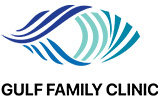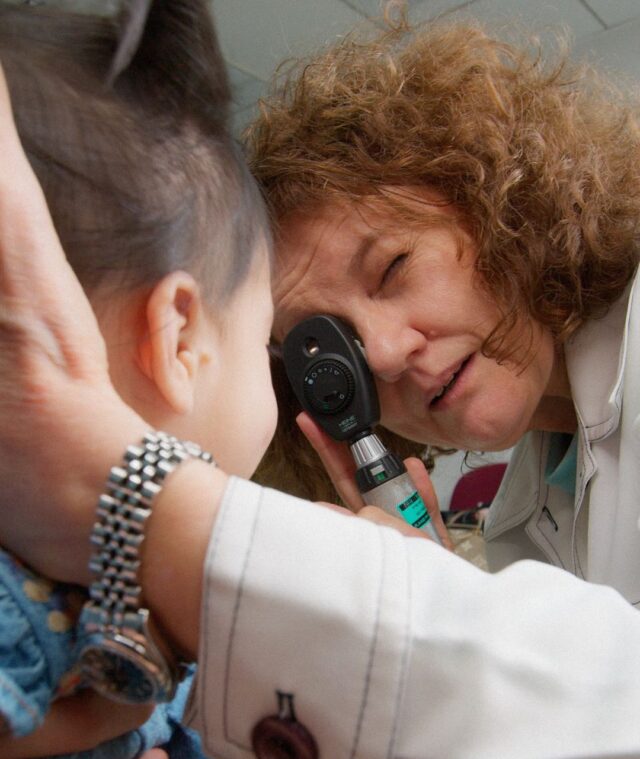The term “strabismus” comes from the same Greek word, which means “to squint.” Also known as crossed eyes, it is a condition characterised by ocular misalignment, be it inward, or outward.
In simple terms, patients with strabismus have one eye turned in a direction different from the other eye.
When the eyes are misaligned, the brain receives two different images from each eye. Patients who go for a consultation with our squint specialists in Dubai commonly report double vision and confusion as some of the first symptoms. Alternatively, a parent or friends noticed the squint.
Over time, their brain will start ignoring the image from the turned eye. And this can lead to permanent vision problems, including amblyopia or lazy eye.
Strabismus is one of the most common binocular vision conditions. According to one study, the pooled prevalence of this disorder is 1.93%.
Aside from affecting binocular vision, this disorder also affects depth perception and stereoscopic vision, which is the ability of the visual brain to process three-dimensional shapes and forms.
Treatment Options
The most recommended treatments for crossed eyes include the following:
1. Eyeglasses or Contact Lenses
Patients with uncorrected refractive errors usually only need to wear eyeglasses or contacts with corrective lenses so that their eyes remain straight and require less effort to focus on things.
Glasses and contacts for strabismus are typically recommended to patients with mild cases of crossed eyes.
2. Prism Lenses
Prism lenses are specially designed lenses infused into regular lens prescriptions. They do not have any focusing power and do not correct refractive errors.
These lenses “trick” the eyes into thinking that an object is in a different location to help with and improve eye alignment, allowing the patient to experience single vision.
With regular use, the patient’s eyes may turn outwards or inwards less frequently, which can help cure their strabismus.
3. Medications
Treatment for crossed eyes in adults may also include pharmacological means, such as:
- Paralytic agents, particularly botulinum toxin type A, to weaken overactive extraocular muscles and affect their movements.
- Autonomic agents, including atropine and miotics, which can change the refractive status of the eyes and improve their alignment, focus and amblyopia.
- Centrally acting agents, such as levodopa and citicoline, which treat the central visual system anomalies that come with amblyopia.
These medications can come in the form of injections, eye drops and ointments.
4. Ocular Patches
Patching is recommended for younger patients as an alternative treatment to surgery. It is also usually given as an additional form of therapy after the surgical correction of strabismus.
This non-invasive crossed-eyes treatment corrects alignment by increasing strength in weak ocular muscles through training and repetition.
5. Surgery
Surgery for strabismus aims to change the eye muscle length or position to align the eyes correctly. This procedure is done using general anaesthesia and dissolvable stitches.
Sometimes, patients have to undergo adjustable strabismus surgery, a procedure wherein the surgeon adjusts the eye muscle positions post-surgery.
6. Vision Therapy
Ophthalmologists usually prescribe patients with strabismus to perform a set of visual activities and exercises that train the eyes and brain to work together.
These visual exercises can help improve the patient’s eye movements, alignment and focus. It also strengthens the eye-brain connection.
Patients can perform these exercises in their doctor’s clinic and at home.
Patients who undergo surgery usually need vision therapy to improve their eye coordination and prevent the eyes from becoming misaligned again.
Signs and Symptoms
Aside from having eyes that point outward and inward or focus in different directions, other signs and symptoms of strabismus include:
- Decreased depth perception
- Double vision
- Impaired vision
- Eyestrain and headaches
- Frequent squinting and blinking, particularly in brightly lit areas
- Bending the head when looking at objects
In adults, these symptoms usually appear or are more noticeable when they are tired or feeling unwell.
Onset and Diagnosis of Strabismus
Strabismus typically appears during infancy and early childhood, usually by the time a child is three years old.
However, some older children and adults can also develop strabismus. In such patients, the usual crossed-eyes causes are eye injuries, stroke, cerebral palsy and other physical disorders.
Older children and adults who experience eyes crossing suddenly and double vision need to see a medical specialist immediately since it may be a symptom of a serious neurological disorder.
People who are farsighted or have a lazy eye are also at higher risk for developing strabismus.
Patients who may have strabismus must undergo several tests to obtain a formal diagnosis.
A diagnosis usually involves the following steps and exams:
1. Patient History
The specialist will ask the patient or patient’s parents questions about their family history, health problems, symptoms they are experiencing, medications they are taking and other factors that may be causing the crossing of eyes.
2. Visual Acuity Test
During this exam, the ophthalmologist asks the patient to read letters from an eye chart to assess their visual acuity. This test can also help the specialist evaluate a young child’s visual behaviour.
3. Eye Health Evaluation
The specialist will use different testing procedures to observe the internal and external structures of the patient’s eyes to exclude any eye condition that may be contributing to strabismus.
The exams help the ophthalmologist determine if the patient’s eyes respond correctly under normal seeing conditions.
4. Alignment and Focus Tests
This step allows the specialist to look for problems that keep the patient’s eyes from focusing effectively or make it hard for them to use both eyes together.
5. Refraction
This test involves checking the patient’s eyes with corrective lenses to measure and evaluate how they focus light. The ophthalmologist may use a phoropter or an automated or handheld instrument during the refraction exam.
Once the eye specialist obtains all the test results and determines the patient has strabismus, they can discuss with the patient or parents the best treatment option.
Speak with one of our eye specialists to know more about strabismus in adults and children, the diagnosis process and treatment options.








